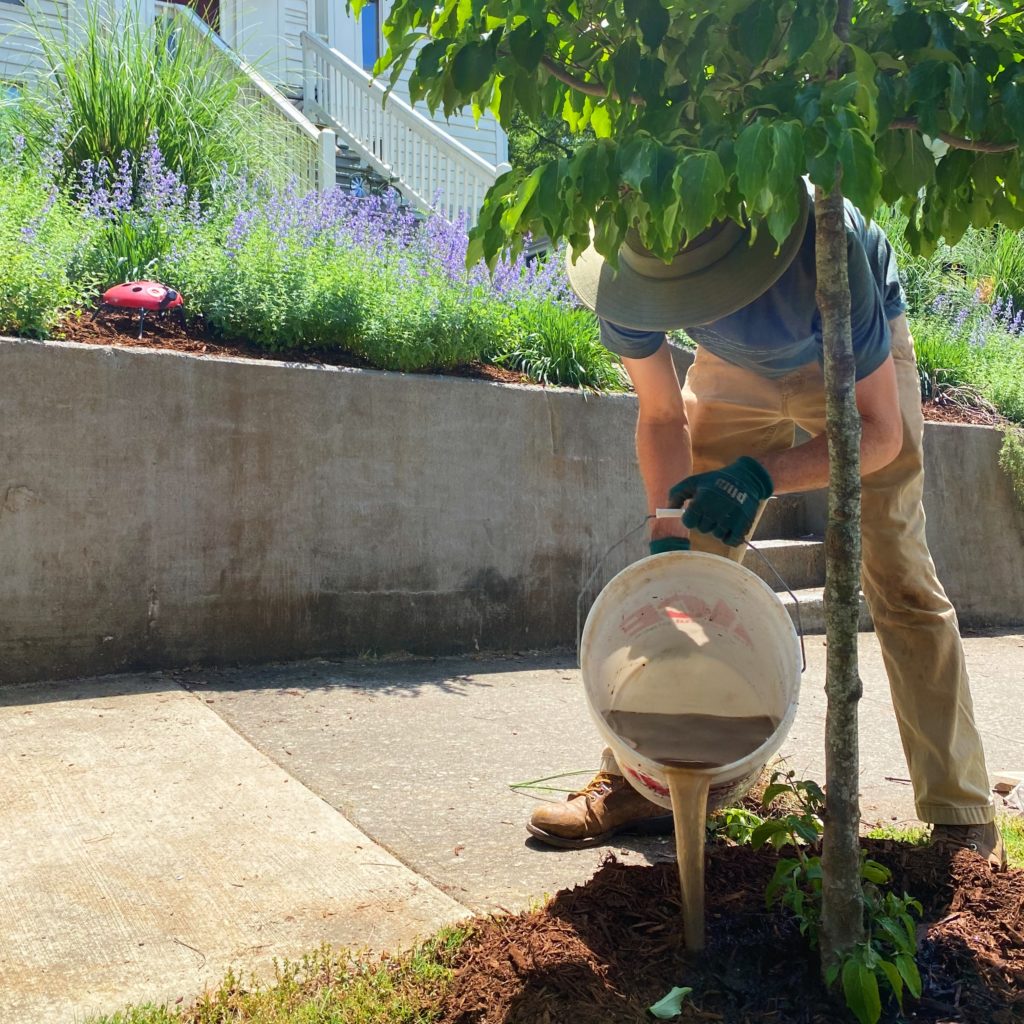
A member of our Caretaking team using compost tea as a drench to help give struggling street trees a boost outside a client’s home.
Compost tea is a natural solution for adding fast-acting nutrients, minerals and beneficial microbes to plants and soil, and a wonderful way to promote healthy growth and fortify your landscape in advance of summer heat and seasonal disease and pests. Since our philosophy is centered around building and nurturing natural, regenerative and closed-loop landscape systems that ‘feed’ themselves over time, we avoid the use of synthetic inputs by design. But compost tea is an excellent, easy-to-make alternative that comes in handy during spring and fall planting, and as needed throughout the year.
It can be used as a drench to pour directly onto roots, or as a foliar spray applied to leaves. Although it’s of course important to consider the specific needs of your plants and timing of application for optimum results, when prepared correctly it’s hard to do any damage when using compost tea (which isn’t the case with many sprays and fertilizers). Its easy, economic production and user-friendly qualities make it one of our go-to amendments for both our installation and caretaking activities. So, what exactly is compost tea and how do we make it? Great question! Let’s break it down…
Like the name implies, it’s a liquid ‘tea’ concentrate brewed from compost that contains soluble nutrients and microorganisms like beneficial bacteria and more. While it’s hard to beat good old-fashioned compost—and we encourage everyone to make and apply compost in their gardens when possible—by nature of being liquid, compost tea has added versatility in its use and application. And it’s a great, supplementary amendment to use in the right circumstances. In addition to drenching and foliar spray, it can be distributed via drip irrigation systems as well.
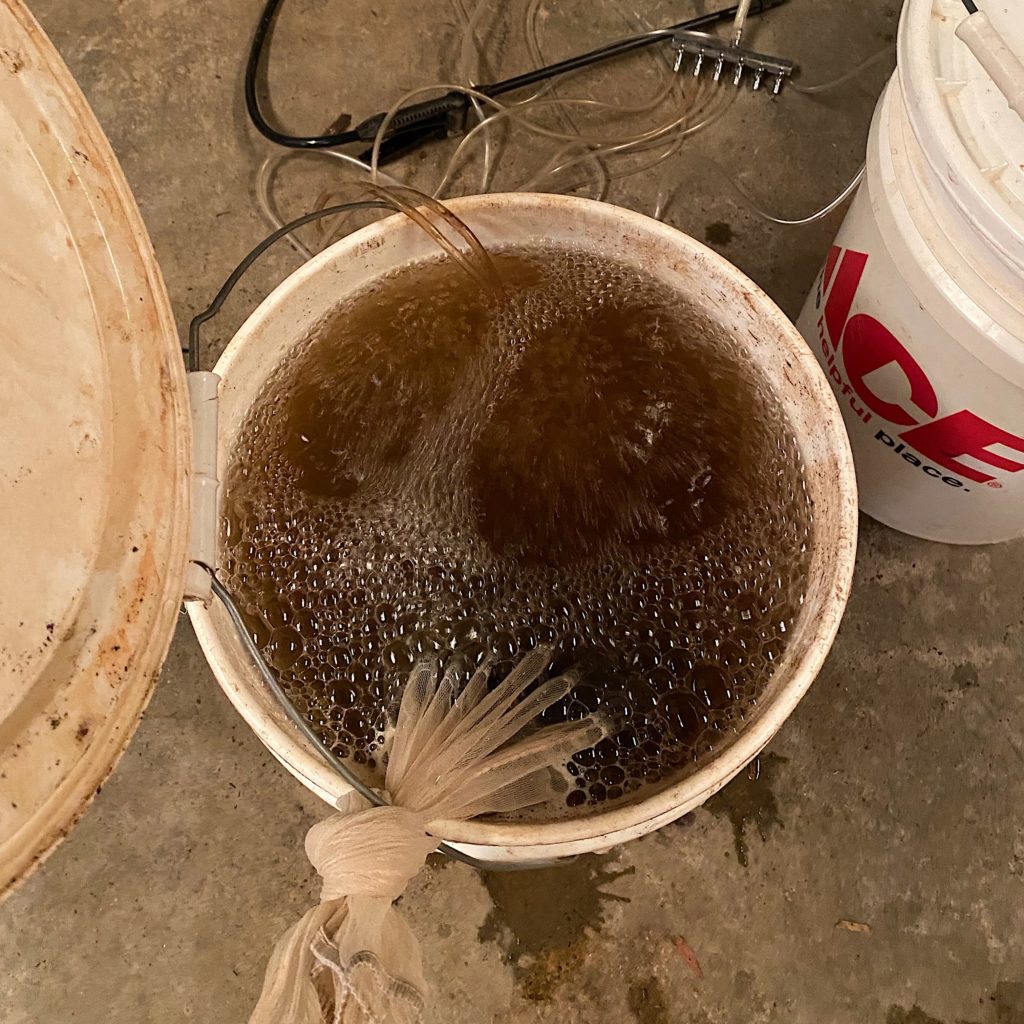
We brew batches of compost tea at Shades of Green headquarters for use during planting and in ongoing maintenance activities.
The first step to making compost tea is starting with quality compost. We aim to make or source compost with a deep brown-to-black color reminiscent of what you’d see in a rich forest floor. Compost that appears too lightly colored may be a sign that it has sat too long and may be devoid of nutrients. When considering texture, we prefer to see a finer compost that demonstrates sufficient decomposition and is adequately sifted. Smell is equally as important, too; compost should not smell like ammonia. An ammonia-like odor could be a sign that it has not decomposed long enough or hasn’t been processed properly.
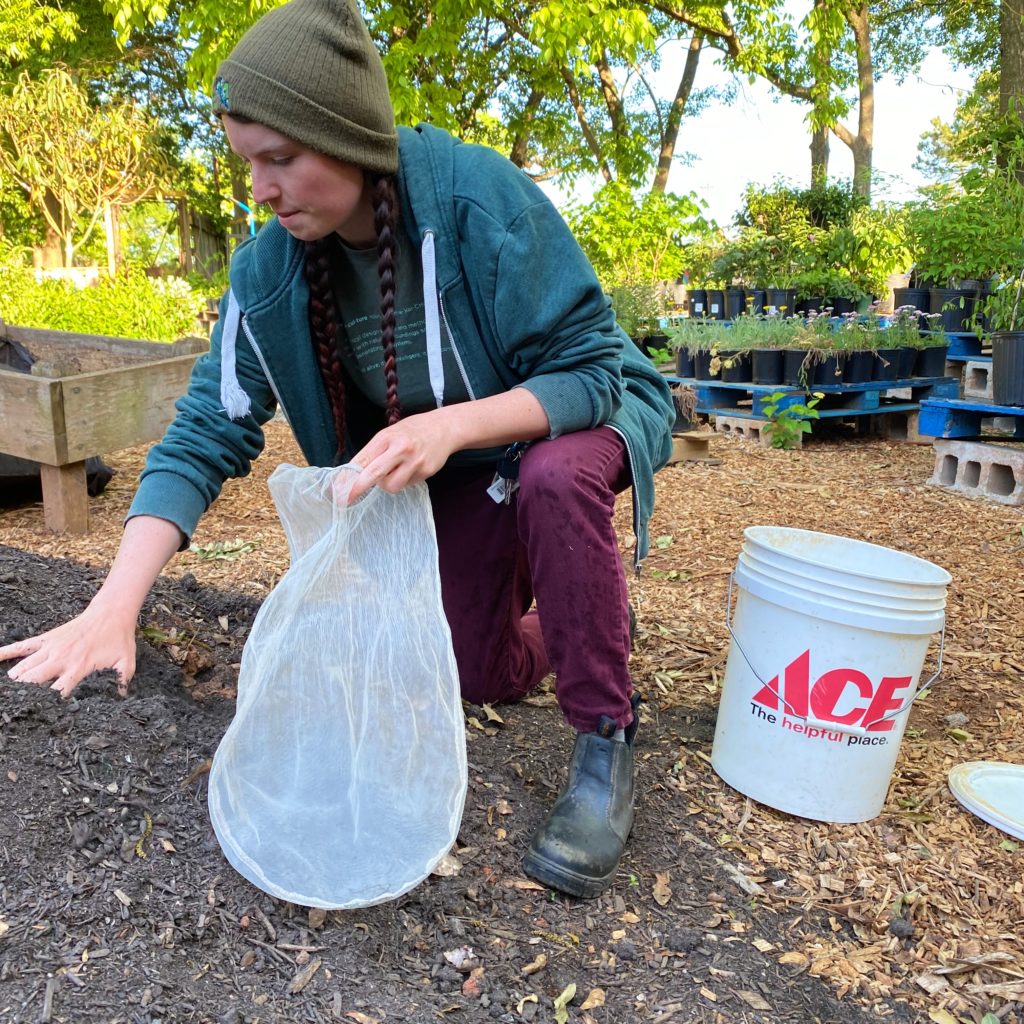
The recipe we use calls for one handful of high-quality compost per gallon of water.
After ensuring the source of compost is satisfactory, and following a recipe of 1 handful of compost per gallon of water, we place 5 handfuls of compost in a paint strainer bag which we hook to the side of a 5 gallon bucket (*it’s important that the bagged compost is slightly elevated so it floats in the water rather than sitting directly on the bottom of the bucket). Then we pour water over the bag to brew, filling the bucket completely to the top. Rainwater or another clean source of water is preferred, as unfiltered municipal tap water from a hose or faucet contains chlorine, chloramines and other chemicals which can kill or interfere with the growth of beneficial organisms. You can also use an RV filter for your hose.
After filling our bucket with water, we add 2 aquarium bubbler stones to aerate the water while brewing. We then allow our compost tea to brew in a room temperature environment for 48-72 hours (a minimum of 24 hours is required). After brewing, it’s important to use your compost tea as immediately as possible—once it stops aerating the ‘clock is on’ before it loses its benefits.
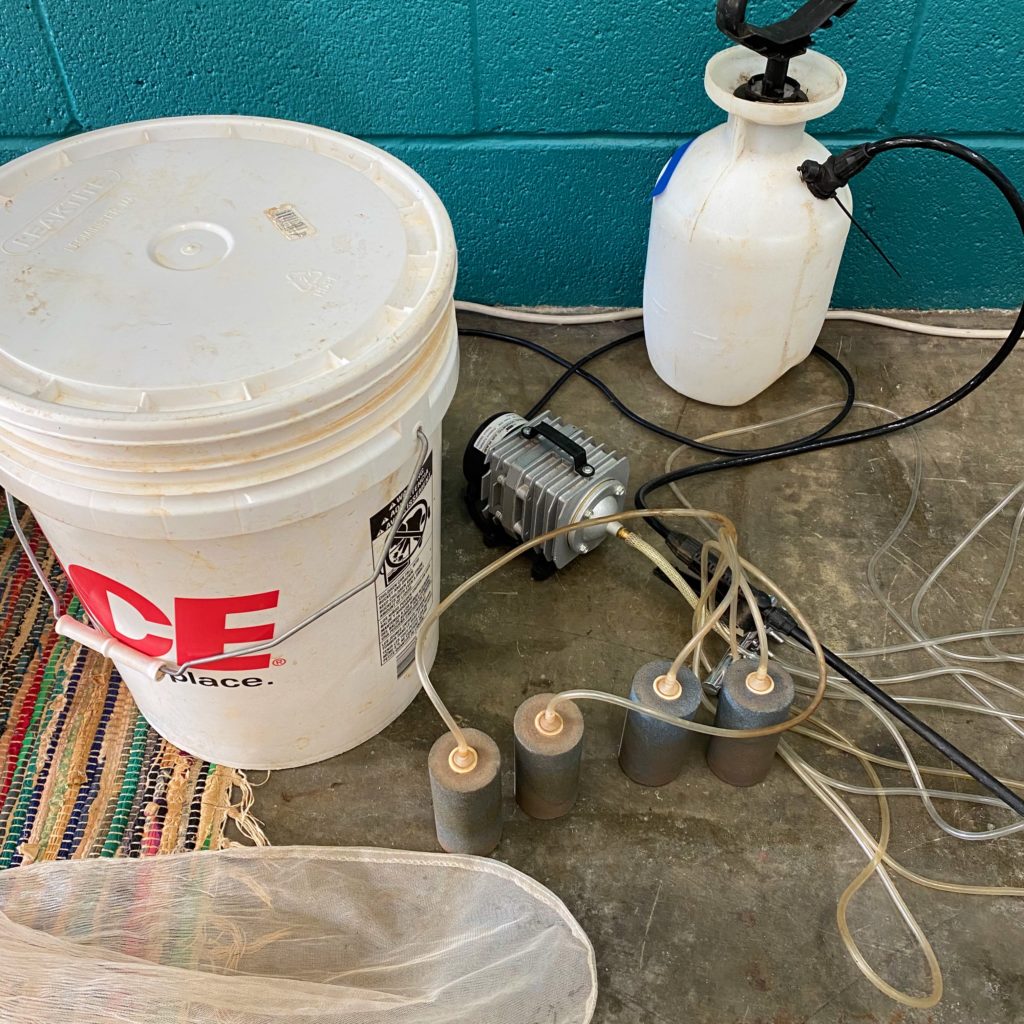
All you need to make compost tea at home is compost, a 5 gallon bucket, chemical-free water, a paint strainer bag and aquarium bubblers for aeration.
This time of year, we commonly use compost tea as a foliar spray and as a drench to pour directly onto roots. When using as a foliar spray, we do so earlier in the morning to ensure that there is ample time for evaporation to avoid excessive residual moisture which can lead to fungus, and to avoid any potential for burning foliage during hours of harsher, hot sun.
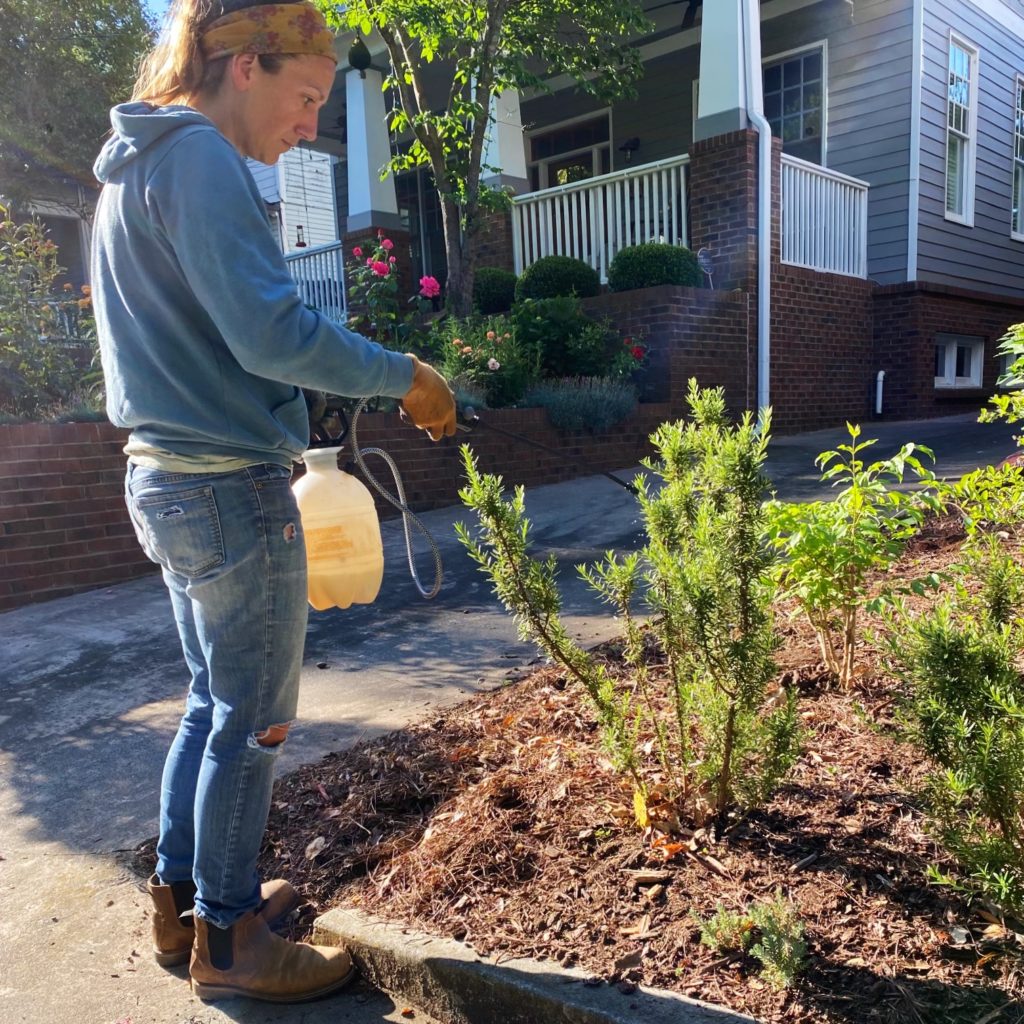
Caretaking Manager Roxy Drew applying compost tea as a foliar spray at a client’s home.
Compost tea is a low-cost, organic amendment that’s fun and easy to make at home. Want to learn even more? One resource we recommend is “The Regenerative Grower’s Guide to Garden Amendments” by Nigel Palmer. Have questions? Chime in during our next Instagram live with Shades of Green Caretaking Manager and resident compost tea brewmaster Roxy Drew on Friday, May 27 at 12 p.m. noon!